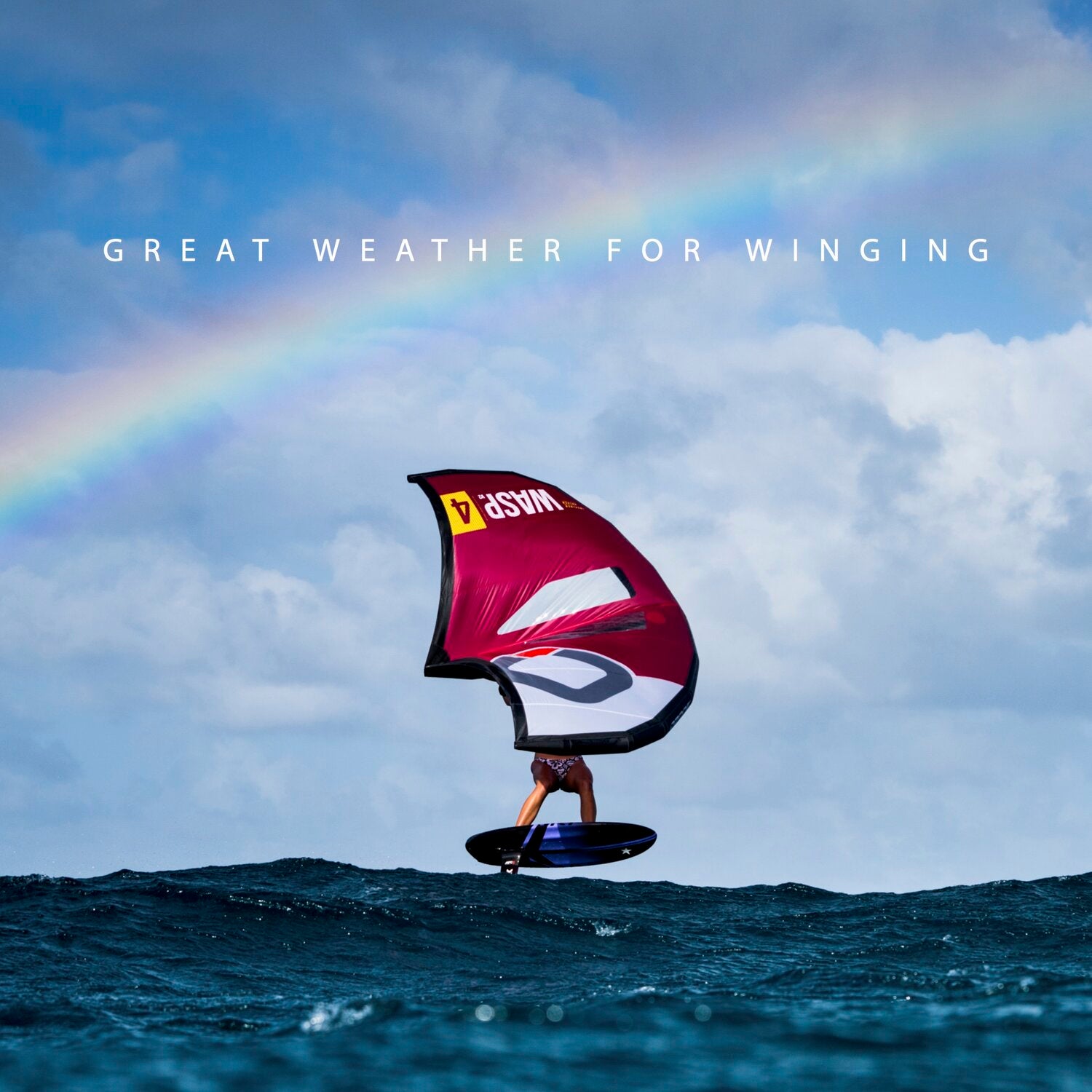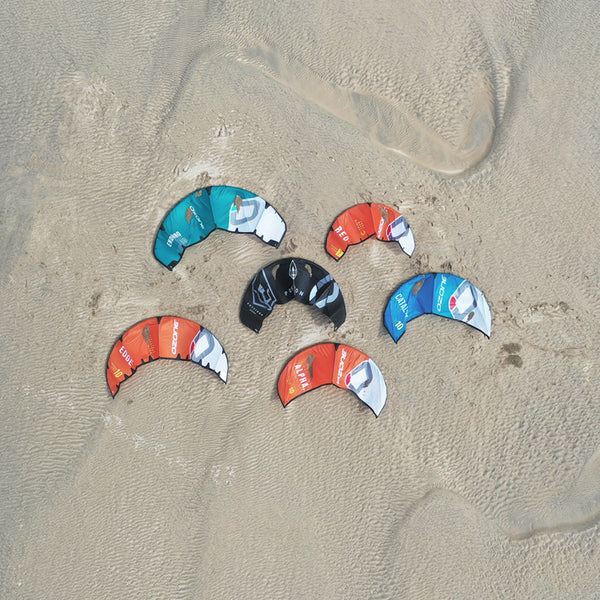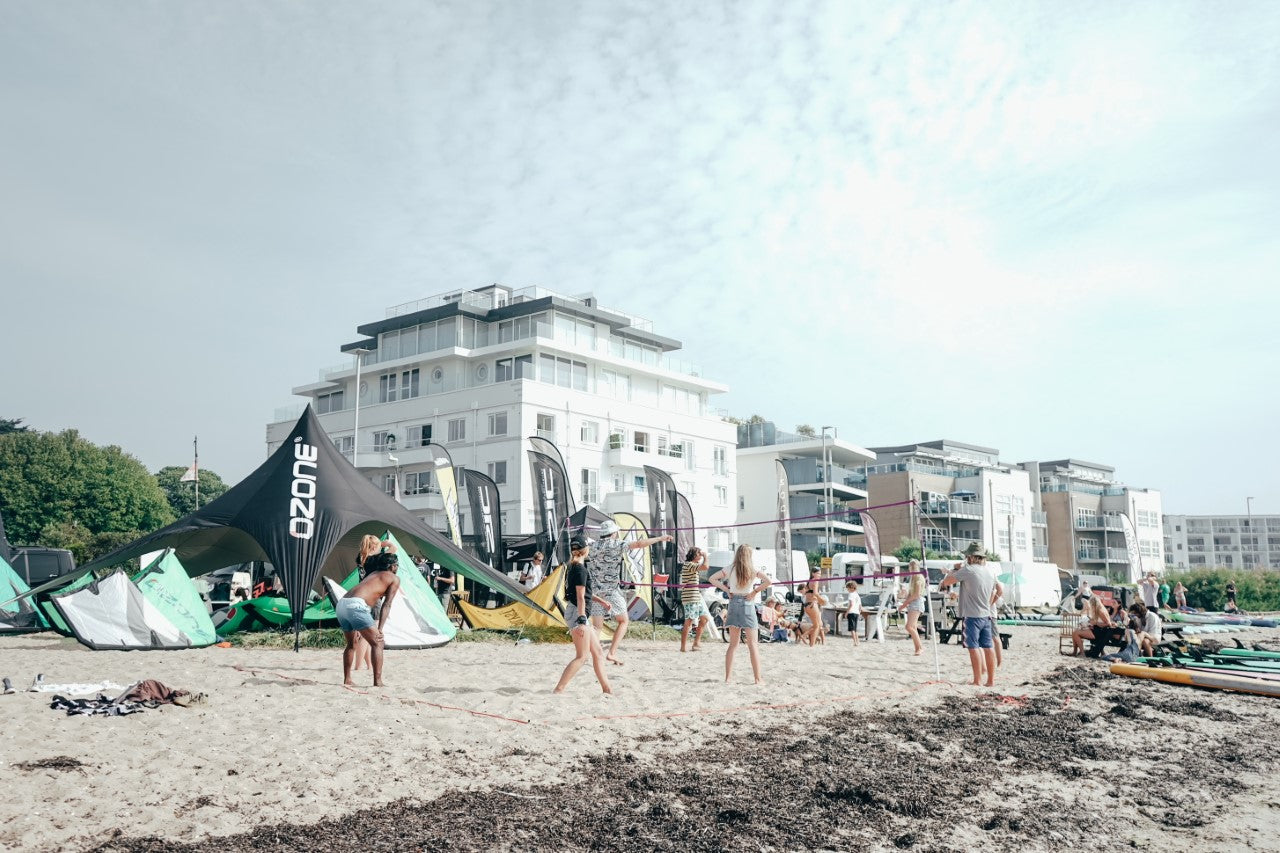
If you’ve visited a windy beach in the last 6 months the chances are you’ve seen someone wing foiling. It’s quite literally blowing up, officially the fastest growing search term on google, Wing Foiling or wing surfing is the latest sport to storm the beaches and it’s polled to become absolutely massive.
Hooked on it ourselves, we thought we’d take a moment to share some thoughts and answer a few questions:
Summed up, what is it?
A merger of kiting, windsurfing and foil boarding, riders catch wind in an inflatable hand held wing which propels them on a hydrofoil board allowing riders to cruise long distances, tow into swell lines and get air.
Whats the point?
In a word - freedom. Being handheld and design to fly itself, the wing is there when you want it and easily forgotten when you don’t, meaning riders can switch being riding wind powered or gliding unrestricted and free on the foil.
A dream self tow-in tool, wave riders are catching more waves than ever, whilst at the shore line sunday strollers are cruising around the bay taking in the sites either up on the foil or pottering on a paddle board.
Incredibly safe and accessible thanks to how easily wings can be 'switched on and off', ‘wingers' are already exploring new beaches, lakes and even rivers searching for more exciting (or mellow) locations, whilst as a school we’re able to be very relaxed about renting and training in a very broad range of conditions.
Do you have to foil?
You can ride any board with a wing including paddle boards, surfboards, skateboards and snowboards, people are loving them all. A paddle board’s speed will be limited by it's drag whilst a sinker surfboard will be difficult to get going in average wind and wing sizes. So using a foil allows riders to leave the water surface, pick up speed and reap the benefits of the foil's hydrodynamics. Feeling weightless and free, they go where you point them, are incredibly efficient, kind on the body and surreal to ride waves.
How do you get into it?
You’ll want to complete some basic training made up of 2 parts - the wing and the foil board.
Part 1) Learning to handle the wing, create movement, steer and complete turns are crucial skills you’ll want to master slow speed before balancing on a hydrofoil, so best tried on dry land first then practiced on a high volume, slow speed paddle board for somewhere between 1 - 20 hours, deepening on your wind and water confidence. You’ll only need 5+ knots to get out learning this.
Part 2) Once competent handling the wing on a floating board you’ll be ready to pick up the pace and start flying on a foil. You’ll begin learning about kit and handling before then working on stance, take off and trimming ahead of steering and carving. You’ll need 10+ knots for foiling.
We offer the introduction part 1 as a 2 hour group or 1:1 session. Part 2 we offer in a 121 format. After completing the session you’re all cleared to start renting the equipment to go ride for casually.
Is it hard?
It’s got a progressive learning curve which isn’t difficult at all. Most people can be cruising around in control with a wing on a paddle board within a couple of hours no worries. Riding foil boards is a unique skill which will take a couple of hours if you have other kite/wind foil experience, Probably a little more if foil riding is new to you. The good news is that due to the size of the equipment in wing foiling there is no easier way to learn to foil and once the penny drops it’s just like riding a bike.
What specific gear do you need?
For lessons and rental with us it’s all included. When you’re ready to get your own you’ll be thinking about these bits:
- A wing, complete with leash - something around 5m is suited for 70-90kg riders in 14-27 knots.
- A board, with around 20-30 litres extra volume on top of your own KG weight.
- A hydrofoil set up with a front wing between 1400 - 2000 mm squared.
Is it a fad?
Not a chance, it’s here to stay and with both the RYA and BKSA already introducing training schemes we’ll be seeing winging hitting waterways across the country in masses. For sure it’s not for everyone and even some of our kite loving team sat on the fence for a while, but then you discover the freedom, catch your first unbroken swell and see the smiles on first timers faces as they cruise across the bay and know that this is something new which sits right in the middle of windsurfing, paddle boarding and kiting.
Kiting or winging?
Both!
Kiting is a buzz, there’s nothing like the energy in a kite. The ability to blast fast, carve hard, bust tricks and jump huge on a kite can never be beaten. It’s a high adrenaline thrill which stays with you forever.
Winging is mellow, it stops and starts, it's all about flow and drawing lines. The feeling is totally unique, free and weightless, probably the closest you’ll ever get to hover boarding waves.
Whilst the wind conditions we look for are similar, the 2 sports complement each other so well if you’re the kind of person who gets plenty of water time and looking for variety on the water.
If you’re choosing one or the other, for us, kite for a buzz, wing for flow.
Interested to find out more or want help getting out there?




